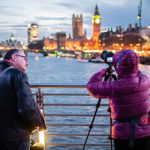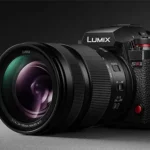When it comes to DSLR photography, sometimes things can get a little complicated. This is especially true when it comes to making the first purchase after your kit lens. Do you choose a zoom lens, a wide angle lens, a prime lens, or even a fixed aperture lens? Well, don’t worry yourself too much, because this article is here to help you.
Zoom vs. Prime
A zoom lens allows the photographer to zoom, which isn’t too surprising. The advantage of a zoom lens is the ability to zoom in and out on your subject to create the perfect composition. Zoom lenses are favored by most photographers because of this function. However, zoom lenses usually have higher f-stops than prime lenses, and this means that they usually let less light into a photo, which affects the shutter speed being used.
A prime lens, on the other hand, doesn’t allow you to zoom at all. You’re limited to one focal length. You may think this sounds rubbish. However, there are many advantages to using a prime lens over a zoom. First of all, prime lenses usually have lower aperture values; some of them go right down to f/1.2. This means that a lot of light can enter the camera lens, which is especially useful for low light situations.
Fixed Aperture or Non-Fixed
The f-stop numbers were briefly discussed above, but just in case you didn’t understand, let me explain in a little more detail. The lower the f-stop, the more light can get into your camera, while the higher the f-stop, the less amount of light can enter. Both ranges have their uses.
Some lenses, for example the Canon 70–200mm f/2.8, have a fixed value of f/2.8 through their entire zoom range. This means that a constant aperture can be achieved throughout. This is very useful when shooting studio photography for the simple reason that the aperture controls the power of the flash. If the aperture of the lens was to change, for example the Canon 18–55mm 3.5 to 5.6, then the strength of the flash would constantly change, giving you inconsistent results. If you can afford a lens with a constant aperture, get it.
Image Stabilization
Some lenses and some camera bodies, such as the Sony Alpha A350, have built in image stabilization. Image stabilization allows you—to a certain degree—to shoot at lower shutter speeds without motion blur. Image stabilization is useful in certain situations, but it can also be a waste of money. If you’re shooting fast moving images then chances are you won’t need image stabilization. The same applies if you use a tripod.
Focal Lengths
There are also focal lengths that you will need to take into account when purchasing a new lens. If you shoot nightclub photography or wildlife photography then chances are you will need something wider than 50mm. So below I will explain the best type of lens for different situations.
Wide Angle Lenses
As discussed above, wide angle lenses are mostly used for landscape photography, but they can also be used for nightclub photography where there’s not too much room to move around. If money is no object, then the Canon 16–35mm f/2.8 lens is an excellent choice. It retails for around £1200. However, if money is an object, the Tamron 17–50mm f/2.8 lens is an excellent alternative. The Tamron lacks the build quality of the Canon and also the autofocus speed, however I personally own this lens and the image quality is excellent. The Tamron can be picked up online for £300–£400.
Medium Range lenses
A medium range is not too short and not too long; it’s in the middle, hence the name medium. Medium range lenses are excellent for portraits, model shoots, and even wedding photography. The best lens in this range is the Canon 24–70 f/2.8, which is a favorite lens among many professional photographers. The Canon 24–70mm is an excellent lens that has an excellent build quality, however the lens is very heavy and is very expensive. But if you’re thinking of shooting weddings then this is a must have bit of kit.
An excellent alternative is the Sigma 24–70 f/2.8. The Sigma offers the same focal length while being a lot cheaper. The image quality, once again, is excellent, however some owners have experienced focusing problems. This can be fixed by Sigma but it’s worth mentioning just in case you do get this lens.
Telephoto Zooms
If you’re looking to shoot wildlife, sports, or even glamour photography then a telephoto lens is something you will want to invest in. Generally these types of lenses are very expensive. but when we’re talking about photography most things are. If money is no object then you will want to get the Canon 70–200mm f/2.8 telephoto lens.
The Canon 70–200mm f/2.8 is an expensive lens used by most pro photographers. It offers an impressive autofocus system and excellent build quality but once again this lens is pretty heavy. If you don’t need the quickness of the f/2.8 then you could go for the Canon 70–200mm f/4 lens. This lens isn’t as heavy and creates sharper images, in my opinion, than the f/2.8.
If both of the above lenses are too expensive then a good alternative is the Sigma 70–200 f/2.8 lens. It’s a fast lens with excellent image quality, and it’s more affordable than the above two lenses.
Other Lenses
There are many other types of lenses which include macro, tilt and shift, fish eye, and many more. However, as a beginner you will more than likely only be interested in the lens types mentioned above.
Choosing a Lens
Overall, choosing a lens doesn’t have to be a difficult experience. Simply think of what you will be using your camera for. Will it be for wildlife pictures, sports, portraits or close up photography? This can then help you choose the required lens. If you can afford a fixed aperture lens then go for it. I would also recommend getting the lowest aperture that you can afford. Not only will this let in more light but it will also give your images the blurry background effect that you see in most professional photographs.
About the Author
Click Here for more free digital DSLR tips, tricks, techniques, and reviews.
Like This Article?
Don't Miss The Next One!
Join over 100,000 photographers of all experience levels who receive our free photography tips and articles to stay current:







Great article. I am thinking to get myself the canon 70-200 2.8 lens but it is somehow pricey for my budget.
What do you think about a 2x teleconverter? We are trying to decide to buy my daughter a new lens or using a 2x converter with her 55-200. What is your preference
Its great informations, I am expecting more from you in the future… thank you very much..and keep continuing..
Good information, but I would like to know if these can be apply to both Full Frame & APS-C format?
I was excited to read your article, but I wish you had put the Nikon equivalent in you examples of must-have lenses.